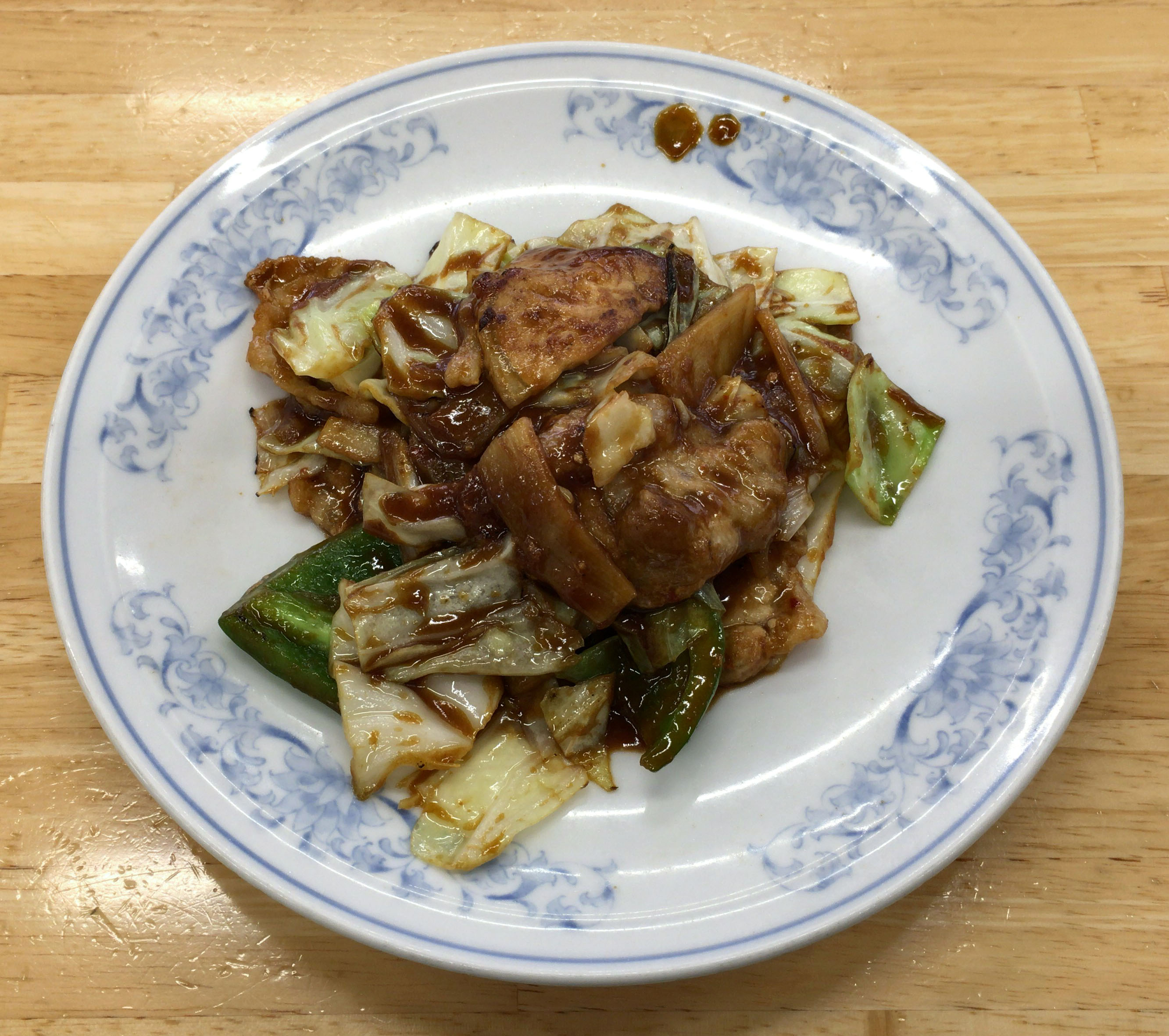Twice Cooked Pork on:
[Wikipedia]
[Google]
[Amazon]
Twice-cooked pork or double-cooked pork () (literally "returned to the pan (wok)") is a Chinese dish in
 The process of cooking twice-cooked pork involves first
The process of cooking twice-cooked pork involves first
ONLINE
*.
Sichuan Twice-Cooked Pork Recipe Video
Yan Jian Rou Recipe: How to Cook Pan Fried Salted Pork
Sichuan cuisine Chinese pork dishes {{China-cuisine-stub
Sichuan cuisine
Sichuan cuisine, alternatively romanized as Szechwan cuisine or Szechuan cuisine (, Standard Mandarin pronunciation: ), is a style of Chinese cuisine originating from Sichuan Province. It has bold flavours, particularly the pungency and spicin ...
. The pork is simmered, sliced, and then stir-fried -- "returned to the wok." The pork is accompanied with stir-fried vegetables, most commonly leeks, but often cabbage, bell peppers, onions, or scallions. The sauce may include Shaoxing rice wine, hoisin sauce
Hoisin sauce is a thick, fragrant sauce commonly used in Cantonese cuisine as a glaze for meat, an addition to stir fry, or as dipping sauce. It is dark-coloured in appearance and sweet and salty in taste. Although regional variants exist, hoi ...
, soy sauce, sugar, ginger, chili bean paste, and tianmianjiang bean paste.
This dish is commonly associated with ''yan jian rou'' (), which tastes quite similar, but cooked in a different process.
Preparation
 The process of cooking twice-cooked pork involves first
The process of cooking twice-cooked pork involves first simmering
Simmering is a food preparation technique by which foods are cooked in hot liquids kept just below the boiling point of water (lower than ) and above poaching temperature (higher than ). To create a steady simmer, a liquid is brought to a boil ...
pork belly
Pork belly or belly pork is a boneless and fatty cut of meat from the belly of a pig. Pork belly is particularly popular in Hispanic, Chinese, Danish, Norwegian, Korean, Thai and Filipino cuisine.
Regional dishes
France
In Alsatian ...
steaks in water with spices, such as ginger, cloves, star anise, jujube
Jujube (), sometimes jujuba, known by the scientific name ''Ziziphus jujuba'' and also called red date, Chinese date, and Chinese jujube, is a species in the genus '' Ziziphus'' in the buckthorn family Rhamnaceae.
Description
It is a smal ...
s, or salt. After refrigeration to firm the meat, it is cut into thin slices.The pork is then returned to a wok and shallow fried in oil, usually along with some vegetables. The most commonly used vegetables are garlic leaves, napa cabbage
Napa cabbage ('' Brassica rapa'' subsp. ''pekinensis'' or ''Brassica rapa'' Pekinensis Group) is a type of Chinese cabbage originating near the Beijing region of China that is widely used in East Asian cuisine. Since the 20th century, it has a ...
, bell peppers, and scallions
Scallions (also known as spring onions or green onions) are vegetables derived from various species in the genus ''Allium''. Scallions generally have a milder taste than most onions and their close relatives include garlic, shallot, leek, chi ...
.
Another simple way of preparing this dish is to cook the meat by itself until it is done, then fry it along with the other ingredients. An alternative method involves frying the meat by itself until cooked, frying the vegetables separately, then frying everything together.
Premade twice-cooked pork sauces are also available from food manufacturers.
History
The origins of twice-cooked pork are unknown. The Sichuan people have a tradition of enjoying a feast every 1st and 15th of traditional Chinese calendar months, with twice-cooked pork as the main course.References
*. Internet ArchivONLINE
*.
Internet Archive
The Internet Archive is an American digital library with the stated mission of "universal access to all knowledge". It provides free public access to collections of digitized materials, including websites, software applications/games, music ...
br>ONLINENotes
External links
Sichuan Twice-Cooked Pork Recipe Video
Yan Jian Rou Recipe: How to Cook Pan Fried Salted Pork
Sichuan cuisine Chinese pork dishes {{China-cuisine-stub